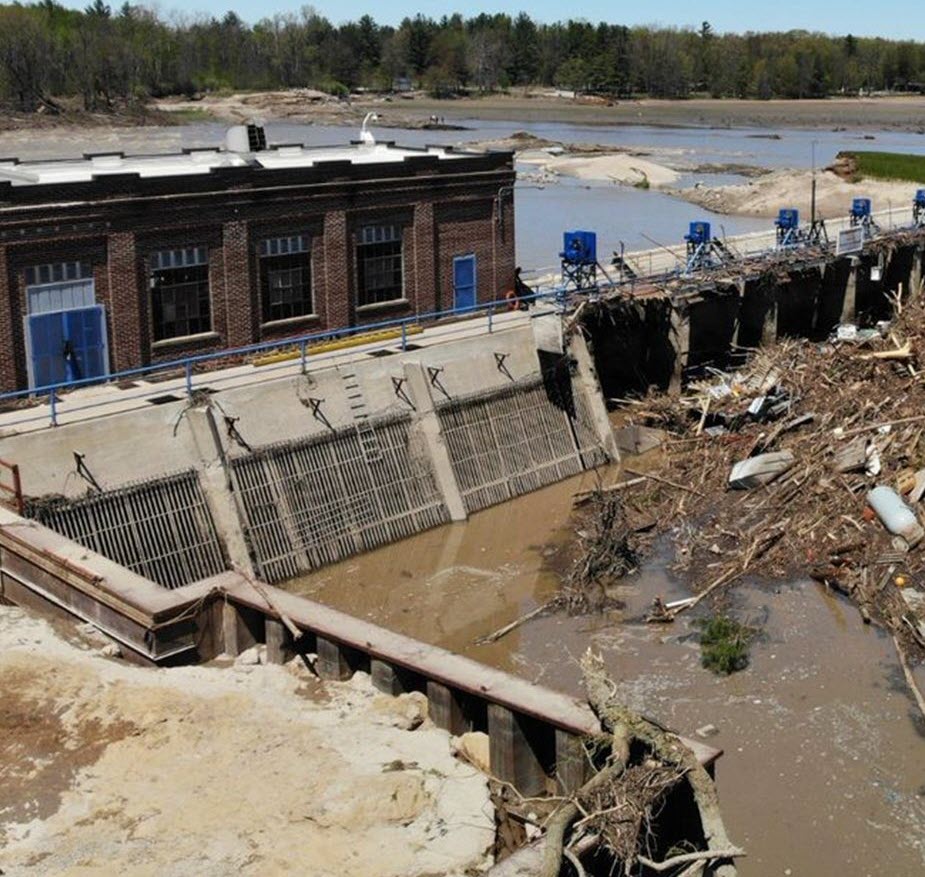 EGLE Resources
EGLE Resources Civil engineering, maybe more than most, is a profession that learns from failure.
So when the Edenville and Sanford dams in northern Michigan failed in the late afternoon of May 19, 2020, the investigation began almost immediately.
Daniel Pradel, Ph.D., P.E., G.E., DGE, F.ASCE, a professor of practice in geotechnical engineering at Ohio State University, led an ASCE team examining the dams, assessing what went wrong and how similar disasters can be prevented in the future.
“We keep having earth dam and levee failures almost every year,” Pradel said. “And they’re preventable.”
Pradel’s team recently published its findings as Edenville and Sanford Dam Failures: Field Reconnaissance Report, available now at the ASCE Bookstore.
Pradel spoke with Civil Engineering Source about the failures and why he’s concerned about the safety of thousands of other dams in the United States.
Civil Engineering Source: Your group certainly appears to have moved very quickly on this.
Daniel Pradel: “Whenever you have a failure you need to move extremely quickly because – especially for earth dams – rain washes away the evidence. One of the things that we did is we mobilized. We were there with boots on the ground within days.
“I think we have a very, very significant issue with our dams in this country. Let me give you some numbers that are in the report. Let’s take Michigan alone. Michigan has about 1,000 dams – I think the exact number is 1,059 – and about 270 of those are over 100 years old.
“The two that failed were two of these very old dams. These were dams that were built of earth materials before the science of earth engineering was, for all purposes, developed. Modern principles of geotechnical engineering – like compaction and stability analyses – were developed in the 1930s, so we have a large number of dams in this country that were built before the science was even available. In the ASCE Infrastructure Report Card, they indicate that we have over 90,000 dams in the U.S. with a grade D for safety.
“I think it’s important for the engineering community to be aware of this issue. Our goal was to move very quickly and make it available as a book for the community to see.”
Source: Walk us through some of the methods you employed through this process.
Pradel: “We use all the tools that are modernly available. We used drones that were equipped with lidar sensors, which gives you a really good survey of the land. They also had thermal and optical sensors. Thermal is really important because when the water gets out of the earth it’s usually colder, so by having the temperature you can actually distinguish areas where the water is seeping out from the inside of the dam.
“After the material was eroded, we took samples, which we took to the lab for testing. That gave us a really in-depth geological survey of the entire reservoir. We had the videos of the failure. We did pixel-tracking analyses to see exactly how the failure progressed. We also did some in-depth analysis of the visual media that was available. Most of the time, unfortunately, we don’t have media. But here, we had people who were filming the dam as it failed. And not only that but within a half an hour, we had video from a plane that went by. We were able to not only see the failure itself, but also the progression of the breach of the dam. This is fantastic case history. It happened during the day, and it was available for analysis on various media thanks to Twitter and YouTube.”
Source: So what are the key takeaways from the investigation?
Pradel: “There were hundreds and hundreds of photographs taken during construction of the dam, and so we know very well the method of construction. One of the takeaways from this investigation is the importance of knowing how these really old dams were constructed. Here, we were able to establish the method of construction. Unfortunately, there are many old dams where we have very little information; dams that were once built in rural areas in the 1910s and 1920s. So that’s the first takeaway: know how your dam was built.
“Secondly, we established that when the dam was built, they used mainly sand, but they didn’t compact the sand; they just dumped it. We’ve known since the mid-1930s that compaction is very, very important. You don’t see a road being built today without seeing first the rollers compacting the soils. Here, they didn’t use any compaction equipment that we could see in the hundreds of photographs. So the second takeaway is to evaluate whether the material was adequately compacted. If it was poorly compacted, you need to be concerned that it doesn’t have enough strength, and your dam may be prone to some failure.
“The third takeaway is that we’re having more and more of what we call extreme events. We’re having stronger rainfalls; we’re having waters behind dams rising much faster. This is what happened at Edenville. We must be prepared for the increased loading from these storms. And in this particular case, unfortunately that combination of being very poorly compacted and being subjected to the 500-year storm resulted in the failure of the Edenville dam. We need to be better prepared.”
Learn more about Edenville and Sanford Dam Failures: Field Reconnaissance Report.



